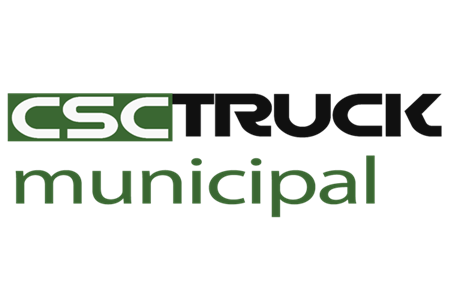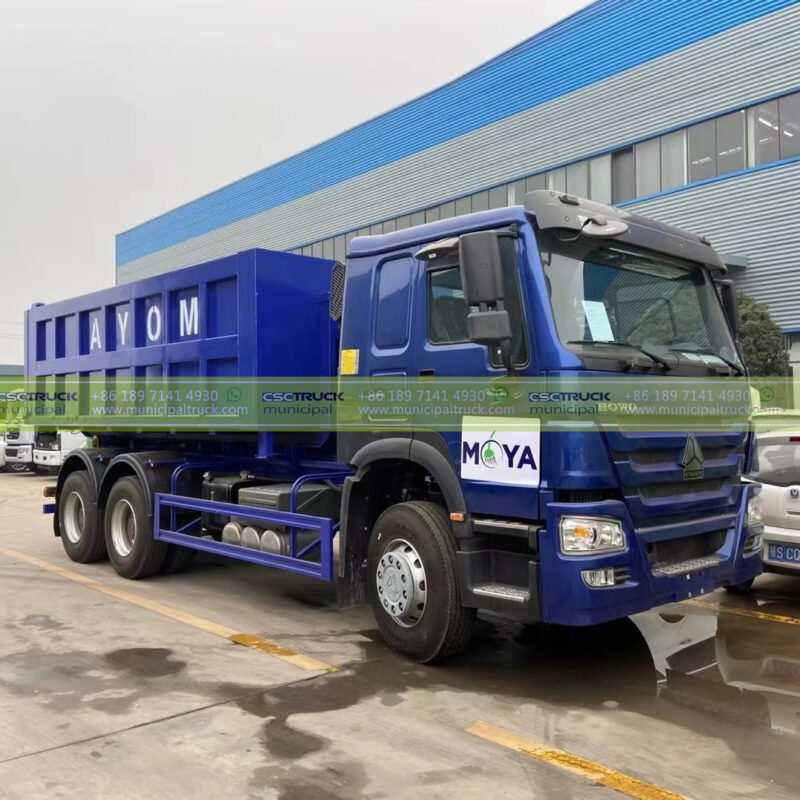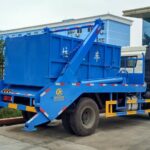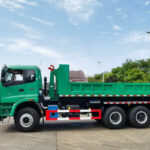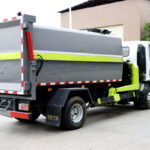Elevating Urban Sanitation in Kenya’s Rift Valley Hub
In a decisive move to tackle mounting waste management pressures driven by rapid urbanization and population growth, Nakuru County Government today commissioned a fleet of ten state-of-the-art hook loader garbage trucks, marking a transformative upgrade to its municipal solid waste collection infrastructure. The formal handover ceremony, presided over by the County Governor and senior officials from the Department of Environment, Waste Management, and Energy, signifies a major strategic investment aimed at overcoming chronic collection delays and eliminating unsightly bin overflow hotspots that have plagued residential estates and commercial districts. This deployment directly addresses a critical bottleneck in Nakuru’s waste logistics chain—the efficient transport of standardized communal containers—by introducing a purpose-built rapid bin swap system designed to slash turnaround times, enhance service coverage reliability, and significantly reduce the public health risks associated with accumulated refuse across Kenya’s fourth-largest urban center.
Technical Prowess: The Engine of Nakuru’s New Waste Logistics
This section details the specialized engineering and operational capabilities that make these hook loader trucks pivotal to Nakuru’s service enhancement strategy.
- Rapid Container Swap Mechanism: The defining feature of this fleet is its hydraulic hook arm system engineered for swift, secure interchange of standardized 6m³ to 10m³ waste containers between fixed collection points and the truck chassis. Utilizing a robust, computer-controlled lifting mechanism with precision alignment guides, operators can execute a full bin exchange—lifting an empty replacement container and depositing a full one—in under five minutes, dramatically increasing the number of service points covered per shift compared to conventional compaction-only collection methodologies prone to lengthy delays. This rapid swap capability fundamentally transforms route efficiency in densely populated zones like Kaptembwa, Bondeni, and Lanet.
- Enhanced Payload Efficiency & Durability: Built on reinforced heavy-duty chassis with multi-axle configurations, each truck maximizes payload capacity while ensuring stability on Nakuru’s varied terrain, including peri-urban access roads. The integration of high-strength steel containers, featuring leak-proof seals and secure locking systems, prevents spillage during transit and withstands the rigors of frequent handling. This robust design ensures consistent transport of heavy, compacted waste loads directly to designated transfer stations or the Dandora-approved landfill site near Naivasha, bypassing inefficient intermediate handling stages.
- Operator Safety & Ergonomic Design: Prioritizing workforce protection, the trucks incorporate enclosed, climate-controlled cabins with enhanced visibility and intuitive joystick-controlled arm operation, minimizing physical strain. Safety interlocks prevent accidental container release during transit, while automated warning systems alert personnel during lifting sequences, significantly reducing the high injury rates historically associated with manual bin handling and traditional rear-loading operations in the county’s waste sector.
Strategic Partnership for Sustainable Service Delivery
The acquisition of this advanced hook loader fleet resulted from a targeted procurement initiative under Nakuru County’s Integrated Urban Sanitation Improvement Programme (IUSIP), funded through a blend of county development funds and a national sanitation grant. The landmark supply and training contract was secured by a consortium combining the global technical expertise of CSCTRUCK Municipal, a premier manufacturer of specialized waste handling vehicles, with the deep local market knowledge and after-sales service network of Kenya EcoLogistics Ltd., a leading East African provider of municipal support equipment and fleet management solutions. This strategic alliance guarantees not only the timely delivery of fit-for-purpose technology but also ensures long-term operational viability through comprehensive technical capacity building; CSCTRUCK engineers are currently conducting intensive hands-on training for county drivers and mechanics on advanced hydraulic system maintenance, while Kenya EcoLogistics establishes a dedicated parts depot and 24/7 technical support hotline within Nakuru City, ensuring minimal fleet downtime and optimal lifecycle management of these critical municipal assets.
Operational Rollout and Vision for Integrated Waste Management
Immediate deployment of the hook loader trucks is strategically focused on Nakuru’s highest-density residential estates—including Flamingo, Section 58, and Freehold—where overflowing communal bins have consistently triggered public complaints and environmental health concerns. The system operates via a scheduled rotation: filled containers are swiftly swapped for sanitized empties, transported efficiently to central transfer stations for compaction or sorting, then rapidly returned to circulation. Nakuru’s Waste Management Directorate is integrating GPS tracking on each vehicle and container into its newly launched Digital Sanitation Command Centre, enabling real-time route optimization, bin fill-level monitoring via scheduled inspections, and enhanced public accountability through service performance dashboards. This hook loader fleet represents the cornerstone of a broader, multi-tiered waste collection strategy; while these units excel at high-volume containerized waste transfer from communal points, the county simultaneously maintains complementary rear loader garbage truck units for dedicated door-to-door collection in planned neighborhoods and specialized commercial zones. The strategic integration of this diverse garbage truck technology, alongside planned investments in material recovery facilities, signifies Nakuru County’s committed trajectory towards achieving a cleaner, healthier, and more resilient urban environment, setting a replicable benchmark for secondary cities across Kenya and the wider East African region in modernizing essential municipal services under significant demographic pressure.
